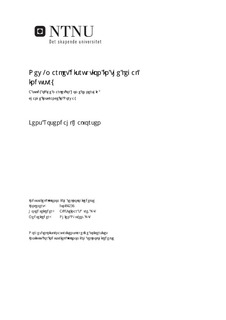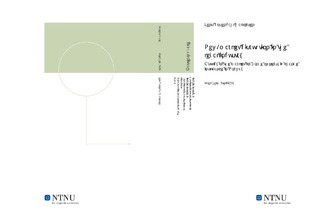| dc.contributor.advisor | Sætre, Alf Steinar | nb_NO |
| dc.contributor.advisor | Nguyen, Nhien | nb_NO |
| dc.contributor.author | Halvorsen, Jens Rosendahl | nb_NO |
| dc.date.accessioned | 2014-12-19T14:30:51Z | |
| dc.date.available | 2014-12-19T14:30:51Z | |
| dc.date.created | 2014-08-31 | nb_NO |
| dc.date.issued | 2014 | nb_NO |
| dc.identifier | 742159 | nb_NO |
| dc.identifier | ntnudaim:10883 | nb_NO |
| dc.identifier.uri | http://hdl.handle.net/11250/266779 | |
| dc.description.abstract | This thesis investigates the role of home ownership change insurance companies in relation to law firms services within the niche of handling claims for home sellers. Based on a review of literature on disruptive innovation the thesis presents a study of cases in Oslo District Court and the Norwegian Courts of Appeal from the years 1993 until 2013. In addition available figures from the Norwegian insurance company Protector is presented. The sets of cases from the courts showed that from the Home Ownership Act was introduced in Norway in 1993 the number of cases increased gradually until 2000, while all sellers were represented by law firms. Then HOC insurance companies gradually displaced law firms during the years from 2001 to 2013. The substitution process started out in the middle and lower segment of the market, while law firms have kept many of the clients with the most expensive houses. The introduction of HOC insurance in Norway was characterized by the entrance of several providers, and many of them quit the market before 2004 because of bad profitability and negative publicity. In 2013 only a few, but profitable HOC insurance companies were left. The analysis shows that the claims handling done by HOC insurance companies do not differ much from the work performed in law firms. The market around 1995 for law firms services within this niche was around 50 MNOK and the market for HOC insurance in 2012 was around 800 MNOK, thus a 20 fold potential for both incumbents and entrants. This new market has been captured by a new industry, which has positioned itself between law firms and insurance companies.This thesis recommends future potential legal service providers to examine niches of legal work. Especially if there can be identified a segment of the market that has an unmet legal need in the lower end. The story of the Norwegian HOC insurance companies showed that the innovation itself were not unattainable to law firms. It was the business model that caused the problems. Existing law firms should watch innovations within legal niches, and claim their part of the new types of legal work that will be performed in the future. To have the greatest odds to succeed, they should choose the appropriate business model and organization within each niche. It is illustrating for the potential of legal innovation that the new market described in this thesis generates more revenue than the largest Norwegian law firm. Law firms should also be aware of thinking that the existence of the traditional way of competing means that disruption does not address them, or that the process of disruption stops at a certain percent of the market. To make the theory of disruption more applicable on the legal and similar industries, more research should be done to understand which circumstances that affect the substitution process for this type of services. | nb_NO |
| dc.language | nob | nb_NO |
| dc.publisher | Institutt for industriell økonomi og teknologiledelse | nb_NO |
| dc.title | New-market disruption in the legal industry: A study of the market for home ownership change insurance in Norway | nb_NO |
| dc.title.alternative | New-market disruption in the legal industry | nb_NO |
| dc.type | Master thesis | nb_NO |
| dc.source.pagenumber | 94 | nb_NO |
| dc.contributor.department | Norges teknisk-naturvitenskapelige universitet, Fakultet for samfunnsvitenskap og teknologiledelse, Institutt for industriell økonomi og teknologiledelse | nb_NO |

